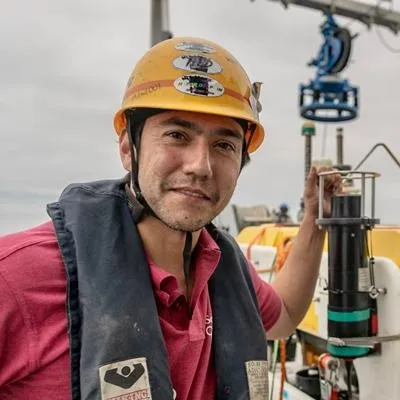Project overview
BioCam develops 3D visual imaging technology for seafloor mapping applications.
This project is funded by NERC (NE/P020887/1) under the Oceanids Marine Sensor Capital program, 2017 to 2021. BioCam is part of the National Marine Facilities Technology Roadmap, and forms the basis for ship-free monitoring of offshore oil and gas infrastructure under AT-SEA (Autonomous Techniques for anthropogenic Structure Ecological Assessment, NE/T010592/1) as part of the NERC INSITE program from 2021 to 2024 where BioCam will be deployed from the National Oceanography Centre’s Boaty McBoaface. We are also part of the team delivering the EU H2020 TechOceanS (101000858) project from 2020 to 2024, which will develop sensing technologies for ship-free ocean sensing.
This project is funded by NERC (NE/P020887/1) under the Oceanids Marine Sensor Capital program, 2017 to 2021. BioCam is part of the National Marine Facilities Technology Roadmap, and forms the basis for ship-free monitoring of offshore oil and gas infrastructure under AT-SEA (Autonomous Techniques for anthropogenic Structure Ecological Assessment, NE/T010592/1) as part of the NERC INSITE program from 2021 to 2024 where BioCam will be deployed from the National Oceanography Centre’s Boaty McBoaface. We are also part of the team delivering the EU H2020 TechOceanS (101000858) project from 2020 to 2024, which will develop sensing technologies for ship-free ocean sensing.
Staff
Lead researchers
Other researchers
Collaborating research institutes, centres and groups
Research outputs
Takaki Yamada, Adam Prugel-Bennett, Oscar Pizarro, Stefan B. Williams & Blair Thornton,
2022, Field Robotics, 2, 1134 - 1155
DOI: 10.55417/fr.2022037
Type: article
Blair Thornton, Adrian Bodenmann, Takaki Yamada, David Stanley, Miguel Massot Campos, Veerle Huvenne, Jennifer Durden, Brian Bett, Henry Ruhl & Darryl Newborough,
2022, Oceanography, 34(4), 92-93
Type: article
Takaki Yamada, Miguel Massot Campos, Adam Prugel-Bennett, Oscar Pizarro, Stefan B. Williams & Blair Thornton,
2022, IEEE Transactions on Pattern Analysis and Machine Intelligence, 45(1), 593-607
Type: article
Takaki Yamada, Miguel Massot Campos, Adam Prugel-Bennett, Stephan Williams, Oscar Pizarro & Blair Thornton,
2021, IEEE Robotics and Automation Letters, 6(4), 7815-7822
Type: article
Takaki Yamada, Adam Prugel-Bennett & Blair Thornton,
2021, Journal of Field Robotics, 38(1), 52-67
DOI: 10.1002/rob.21961
Type: article
David Stanley, Adrian Bodenmann, Miguel Massot Campos & Blair Thornton,
2021
Type: conference
David Stanley, Adrian Bodenmann, Miguel Massot Campos & Blair Thornton,
2020
Type: conference
